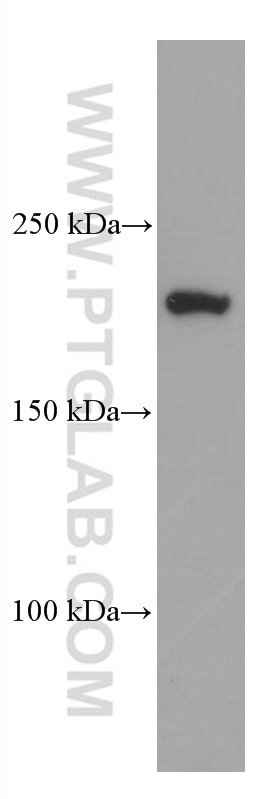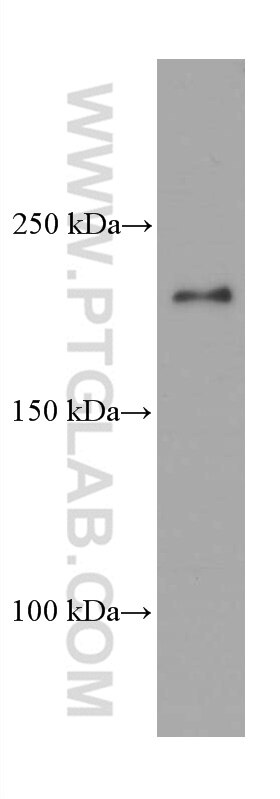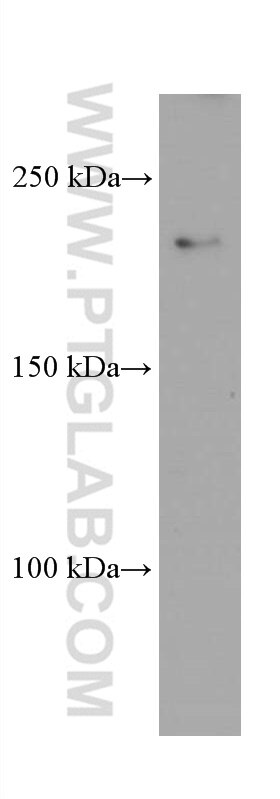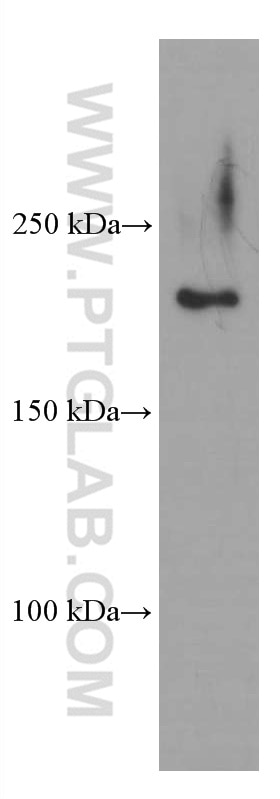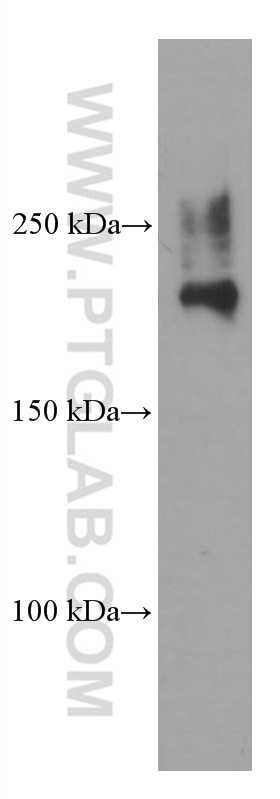Tested Applications
| Positive WB detected in | HEK-293 cells, PC-3 cells, rat brain tissue, HeLa cells, mouse brain tissue |
Recommended dilution
| Application | Dilution |
|---|---|
| Western Blot (WB) | WB : 1:500-1:2000 |
| It is recommended that this reagent should be titrated in each testing system to obtain optimal results. | |
| Sample-dependent, Check data in validation data gallery. | |
Product Information
66463-1-Ig targets CAMSAP2 in WB, ELISA applications and shows reactivity with human, mouse, rat samples.
| Tested Reactivity | human, mouse, rat |
| Host / Isotype | Mouse / IgG1 |
| Class | Monoclonal |
| Type | Antibody |
| Immunogen | CAMSAP2 fusion protein Ag11794 Predict reactive species |
| Full Name | calmodulin regulated spectrin-associated protein 1-like 1 |
| Calculated Molecular Weight | 1478 aa, 167 kDa |
| Observed Molecular Weight | 170-200 kDa |
| GenBank Accession Number | BC065508 |
| Gene Symbol | CAMSAP2 |
| Gene ID (NCBI) | 23271 |
| RRID | AB_2881831 |
| Conjugate | Unconjugated |
| Form | Liquid |
| Purification Method | Protein G purification |
| UNIPROT ID | Q08AD1 |
| Storage Buffer | PBS with 0.02% sodium azide and 50% glycerol, pH 7.3. |
| Storage Conditions | Store at -20°C. Stable for one year after shipment. Aliquoting is unnecessary for -20oC storage. 20ul sizes contain 0.1% BSA. |
Background Information
CAMSAP2, also known as CAMSAP1L1, is a microtubule minus-end binding protein, and is required for proper microtubule organization in neurons. CAMSAP2 stabilizes noncentrosomal microtubules and is important for neuronal polarity, axon specification, and dendritic branch formation.
Protocols
| Product Specific Protocols | |
|---|---|
| WB protocol for CAMSAP2 antibody 66463-1-Ig | Download protocol |
| Standard Protocols | |
|---|---|
| Click here to view our Standard Protocols |
